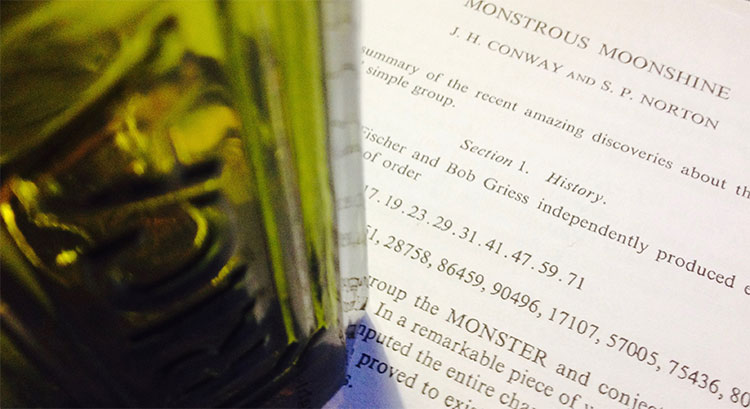Do we know why the monster exists and why there’s moonshine around it?
The answer depends on whether or not you believe that vertex operator algebras are natural, elegant and inescapable objects.
the monster
Simple groups often arise from symmetries of exceptionally nice mathematical objects.
The smallest of them all, $A_5$, gives us the rotation symmetries of the icosahedron. The next one, Klein’s simple group $L_2(7)$, comes from the Klein quartic.
The smallest sporadic groups, the Mathieu groups, come from Steiner systems, and the Conway groups from the 24-dimensional Leech lattice.
What about the largest sporadic simple, the monster $\mathbb{M}$?
In his paper What is … the monster? Richard Borcherds writes (among other characterisations of $\mathbb{M}$):
“3. It is the automorphism group of the monster vertex algebra. (This is probably the best answer.)”
But, even Borcherds adds:
“Unfortunately none of these definitions is completely satisfactory. At the moment all constructions of the algebraic structures above seem artificial; they are constructed as sums of two or more apparently unrelated spaces, and it takes a lot of effort to define the algebraic structure on the sum of these spaces and to check that the monster acts on the resulting structure.
It is still an open problem to find a really simple and natural construction of the monster vertex algebra.”
Here’s 2 minutes of John Conway on the “one thing” he really wants to know before he dies: why the monster group exists.
moonshine
Moonshine started off with McKay’s observation that 196884 (the first coefficient in the normalized j-function) is the sum 1+196883 of the dimensions of the two smallest simple representations of $\mathbb{M}$.
Soon it was realised that every conjugacy class of the monster has a genus zero group (or ‘moonshine group’) associated to it.
Borcherds proved the ‘monstrous moonshine conjectures’ asserting that the associated main modular function of such a group is the character series of the action of the element on the monster vertex algebra.
Here’s Borcherds’ ICM talk in Berlin on this: What is … Moonshine?.
Once again, the monster vertex algebra appears to be the final answer.
However, in characterising the 171 moonshine groups among all possible genus zero groups one has proved that they are all of the form:
(ii) : $(n|h)+e,g,\dots$
In his book Moonshine beyond the Monster, Terry Gannon writes:
“We now understand the significance, in the VOA or CFT framework, of transformations in $SL_2(\mathbb{Z})$, but (ii) emphasises that many modular transformations relevant to Moonshine are more general (called the Atkin-Lehner involutions).
Monstrous moonshine will remain mysterious until we can understand its Atkin-Lehner symmetries.”

